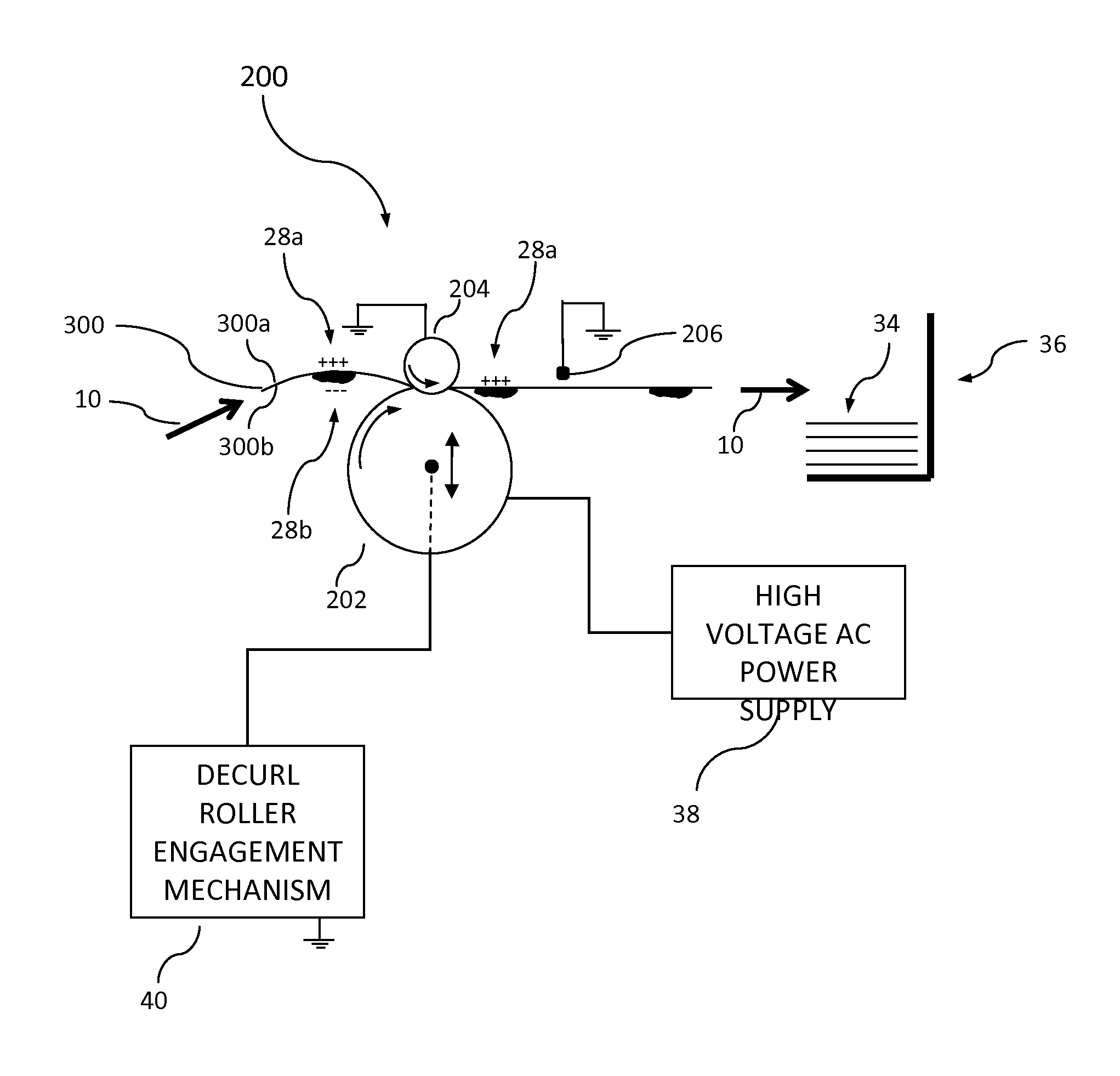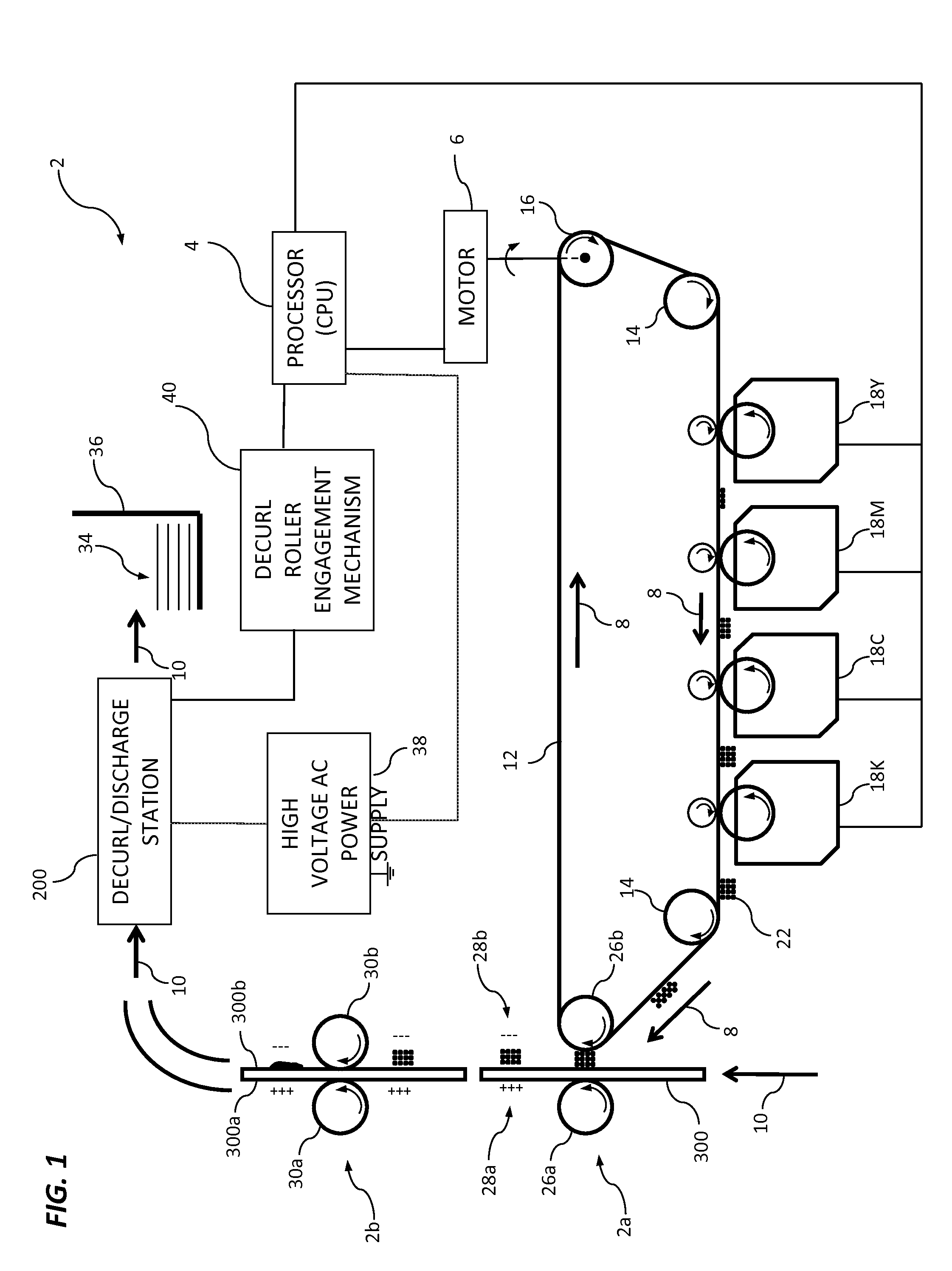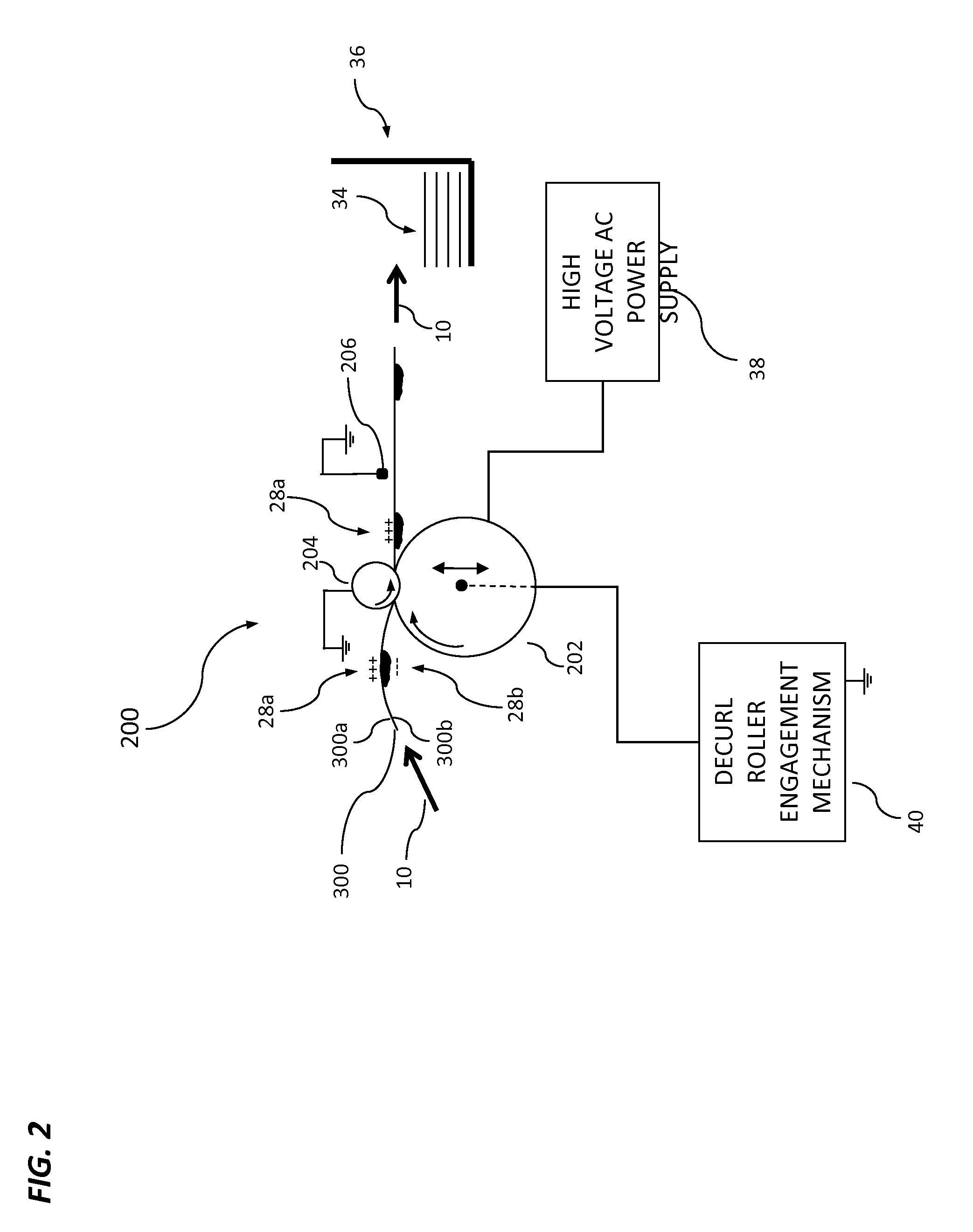Concurrently removing sheet charge and curl
a technology of electrostatic charge and curling, which is applied in the direction of electrographic process apparatus, instruments, optics, etc., can solve the problems of high ac voltage, trapped electrostatic charge on toned sheets, and inconvenience for users of printed sheets
- Summary
- Abstract
- Description
- Claims
- Application Information
AI Technical Summary
Benefits of technology
Problems solved by technology
Method used
Image
Examples
first embodiment
[0042]Referring now to FIG. 2, the decurl / discharge station 200 in accordance with the present invention is shown. The decurl / discharge station 200 includes a set of nipped lower and upper decurl / discharge rollers 202 and 204 engaged and disengaged by decurl roller engagement mechanism 40 having an adjustable pressure of engagement, a non-contact charge removal device 206, and the high voltage AC power supply 38. The charged sheet 300, movable along the sheet path 10, has an untoned side 300a and a toned side 300b wherein the untoned side of the sheet 300a has the positive charge 28a, and the toned side of the sheet 300b has the negative charge 28b. The high voltage AC power supply 38 provides an AC voltage to the lower decurl / discharge roller 202. Upon contact, the lower decurl / discharge roller 202 substantially dissipates the negative charge 28b from the toned side of the sheet 300b, and the positive charge 28a substantially remains on the untoned side of the sheet 300a. The posit...
second embodiment
[0051]In a second embodiment, shown in FIG. 5, a second set of nipped decurl / discharge rollers 208 and 210 are provided subsequent to the first set shown in FIG. 2 and reproduced in FIG. 5. This second set of rollers are engaged and disengaged using decurl roller engagement mechanism 40 having an adjustable pressure of engagement and lower decurl / discharge roller 208 is connected to high voltage AC power supply 38. There are instances where either the initial curl or the initial charge on sheet 300 has been insufficiently reduced by the first set of nipped decurl / discharge rollers 202 and 204. As shown in FIG. 5, the initial positive and negative charge 28a and 28b on the incoming sheet has been reduced to the remaining positive and negative charge 29a and 29b after passage through the first set of nipped decurl / discharge rollers 202 and 204 and under the non-contact charge removal device 206. The remaining positive and negative charge 29a and 29b is then removed after passage throu...
PUM
 Login to View More
Login to View More Abstract
Description
Claims
Application Information
 Login to View More
Login to View More - R&D
- Intellectual Property
- Life Sciences
- Materials
- Tech Scout
- Unparalleled Data Quality
- Higher Quality Content
- 60% Fewer Hallucinations
Browse by: Latest US Patents, China's latest patents, Technical Efficacy Thesaurus, Application Domain, Technology Topic, Popular Technical Reports.
© 2025 PatSnap. All rights reserved.Legal|Privacy policy|Modern Slavery Act Transparency Statement|Sitemap|About US| Contact US: help@patsnap.com



